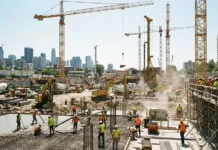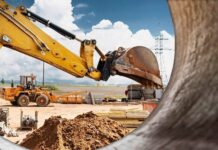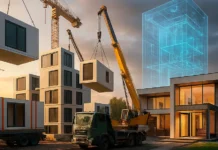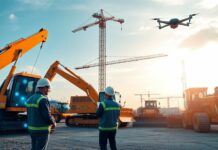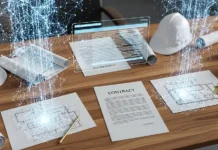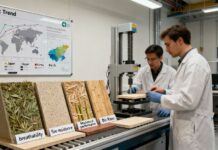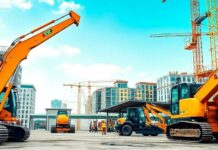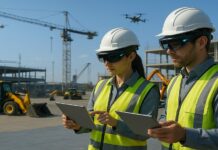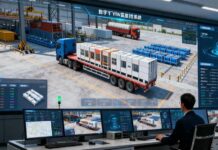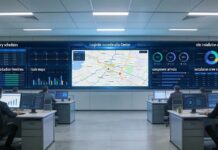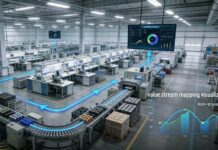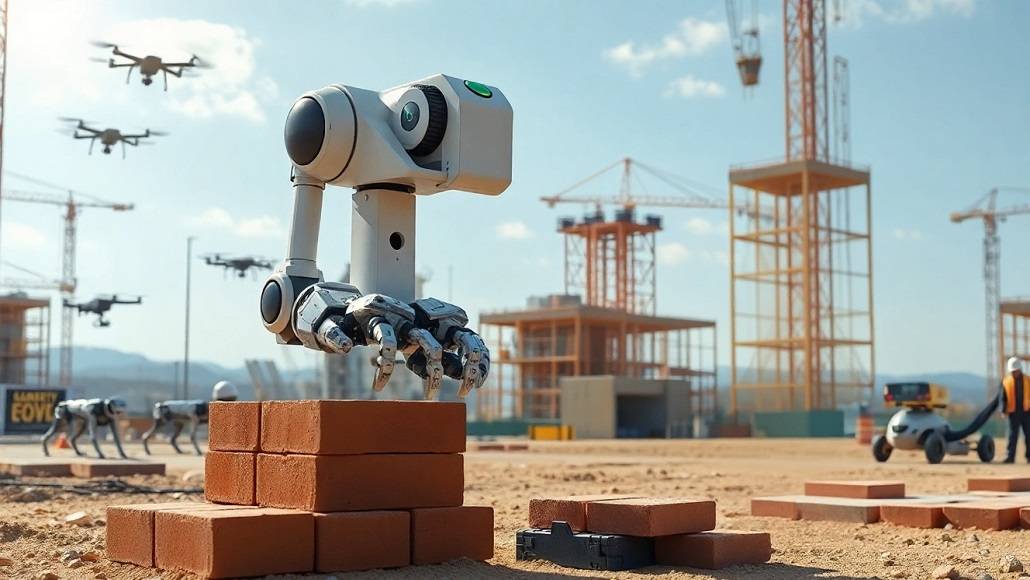Technology breakthroughs are driving a major shift in the construction sector, changing conventional workflows and improving safety, accuracy, and efficiency. Among these developments, Robots have become a vital technology that can serve construction workers as an assisting tool to help streamline tasks and save time. Urbanisation and project complexity have led to the use of robots in construction activities to take strategic benefits that robots can provide in dealing with labor shortages, safety issues, productivity, and accurate delivery.
Construction workers are increasingly aided by a new generation of robots capable of carrying out various tasks, from repetitive and dangerous to highly technical. Robotic technology is an existing reality rather than an aspirational future possibility. Increased speed, safety, and cost-effectiveness is driving the adoption of robotic construction activity.
- Enhancing Safety and Reducing Risks on Construction Sites
One of the most critical roles robots have is in assisting construction workers to improve safety by minimising exposure to hazardous atmospheres and materials. Construction environments are inherently dangerous, characterized by heavy equipment, unstable structures, and heights. Safety continues to be a main concern for many in the industry, for example, the construction industry still records an increasing number of accidents and fatalities regardless of strict legislation.
Robots with sensors and cameras are also able to work in dangerous areas where it would be of great risk for human employees. For example, robots used to inspect skyscrapers or confined spaces can assess structural soundness without people being involved. They offer real-time data and high-definition imagery that allow engineers and safety managers to start understanding potential issues sooner.
In recent years, autonomous drones have been utilized to rapidly scan large construction sites, producing high-resolution 3D models and thermal imaging indicating stress points and thermal leaks. Aerial robots can access difficult areas while eliminating exposing workers to risk, and provide valuable data that can be used for preventative maintenance and safety inspection. Most recently, robotic inspection devices demonstrated a factual reduction of accidents, illustrating their goal of safeguarding human workers.
Additionally, autonomous demolition and material handling robots are becoming more capable of operating in tandem with human crews, reducing the need for human labor within dangerous settings. These collaborative robots, popularly referred to as cobots, have force feedback and sensors that enable them to instantly stop upon sensing human proximity, thus avoiding any kind of mishaps before they occur.
- Increasing Productivity and Efficiency
The construction industry is notorious for delays driven by labor shortages, unpredictable weather, and project mismanagement. Robots can fill the void by providing continuous, accurate, and yielding assistance in a way that enhances productivity significantly. Due to the fact they can operate as long as the power lasts, they are effective for demanding project timelines.
In respect to the repetitive tasks of laying bricks, pouring concrete and moving materials, construction robots excel in maintaining consistency, robotic bricklaying is a prime example, with documented speeds in laying bricks multiplying exponentially. Robotic earth moving (bulldozers and excavators) can be more efficient, with the capability of being automated and programmed based on GPS coordinates to optimise material route reducing waste and be most efficient.
Statistics from the industry demonstrate that robotic automation can positively impact productivity within the large construction project space. Productivity improvements are especially important when dealing with complex infrastructure projects that require intricate geometries or with tight timescales. In a large construction project, robotic systems also help to ensure that phases are better co-ordinated, ultimately minimising downtime and interruptions.
The other key benefit of robots supporting construction workers is their ability to carry out work in challenging conditions that would otherwise stop manual operations. Robots can work under extreme temperatures, high winds, or nighttime, supporting human efforts and keeping project momentum going. In short, robots are substituting for human labor, allowing construction workers to perform more in shorter timeframes.
- Precision and Quality Control
Quality assurance is paramount in construction, and robots are contributing significantly to elevating standards. Tasks like welding, surveying, and sensor inspections need to involve a level of precision that human beings cannot achieve. Robots promise consistency, consistency reduces errors, and provide assurance that buildings are built to specifications. For example, a robotic welding system can make complex welds of a consistent quality that minimises structural failures. Surveying drones, and robotic total stations define accurate 3D models of a site allowing the builder to make accurate measurements for positioning and aligning. These digital twins subsequently act as real-time reference points compared to project designs, enabling construction personnel to detect deviation early.
In addition, advanced sensor-equipped robotic systems can conduct non-destructive testing on materials and finished structures to verify compliance with safety regulations. Such testing is critical to infrastructure including bridges, tunnels or skyscrapers where minor deviations can have considerable implications in terms of safety. The ongoing use of robotics in quality control tasks can lead to substantial savings in rework cost and project duration. It also improves the durability of structures by ensuring that buildings are constructed to the highest level of accuracy and longevity.
- Supporting Complex and Specialized Tasks
Construction projects are evolving towards more complex and innovative designs, incorporating intricate geometries and unconventional materials. The precision and flexibility to meet these needs are beyond the capabilities of human effort alone. Robotics supports the construction workers in performing these advanced operations with precision and flexibility.
Robotic arms and autonomous machinery are currently able to execute sophisticated fabrication processes, such as prefabrication of parts, complex assembly, and precise finishing work. For instance, robotic units are used during the fabrication of steel and concrete components with accurate dimensions and smooth finishes. This automation minimizes material wastage and increases the quality of pre-fabricated modules, which are delivered on-site for quick assembly.
Further, robotic systems can be learned to modified-to-specific designs, allowing for changes in project specs with minimal downtime. This has clear advantages for architects who design organic curves, double-curved surfaces, or other complex geometries where robotic systems aided by AI-based learning algorithms will be able to dynamically adapt their work in pursuit of high fidelity to the design intent.
Automated spray systems are being employed for coating or insulating in remote areas where full coverage and uniformly applied systems are at a premium. The advanced robotics revolutionising construction industry comes into play for construction employees when it comes to performing the work that has exact precision details that assist in the overall quality of a project, and are saving labor and its related errors.
Conclusion
Robots revolutionising construction industry as they offer complex assists that are augmenting safety, productivity, quality, and adaptability. Construction workers are presented with safer working conditions with robotic systems handling dangerous tasks and inspecting hard-to-reach places. In turn, the entire industry reaps valuable productivity benefits through round-the-clock operation, accurate execution, and low wastage.
Deployment of robotic technologies makes it possible to implement sophisticated and specialised operations, allowing construction professionals to expand the frontiers of architectural and engineering potential. Along with technology developments, in particular, AI, machine learning and automation, construction will resort to robotics revolutionising construction industry in the pursuit of more intelligent, sustainable, and resilient infrastructure.
With the use of new technologies, the construction industry is paving the way for a world where human intelligence and machine assistance combine to produce safer, more efficient, and more innovative spaces. This new progress signifies a transformation as robots are no longer just tools, but partners in the building process-enabling the labor force and changing the industry for years to come.



